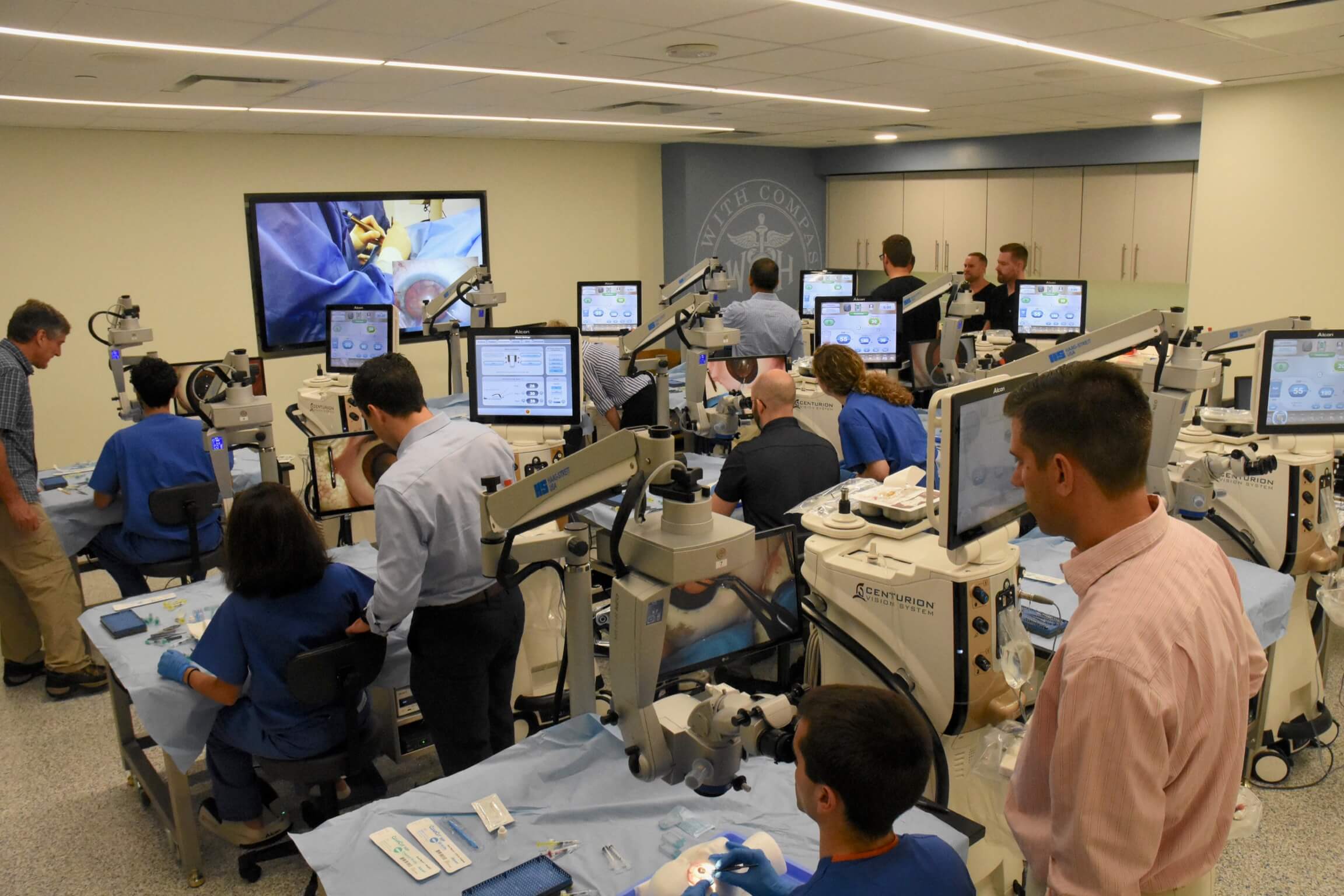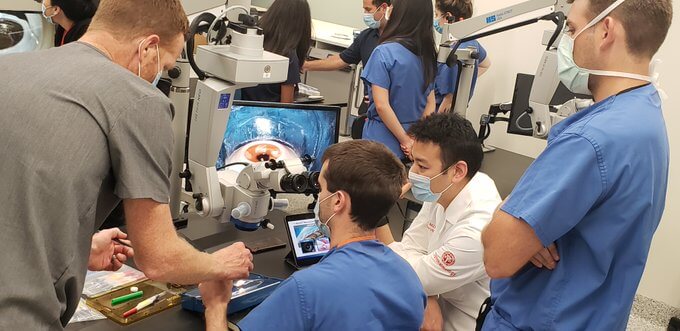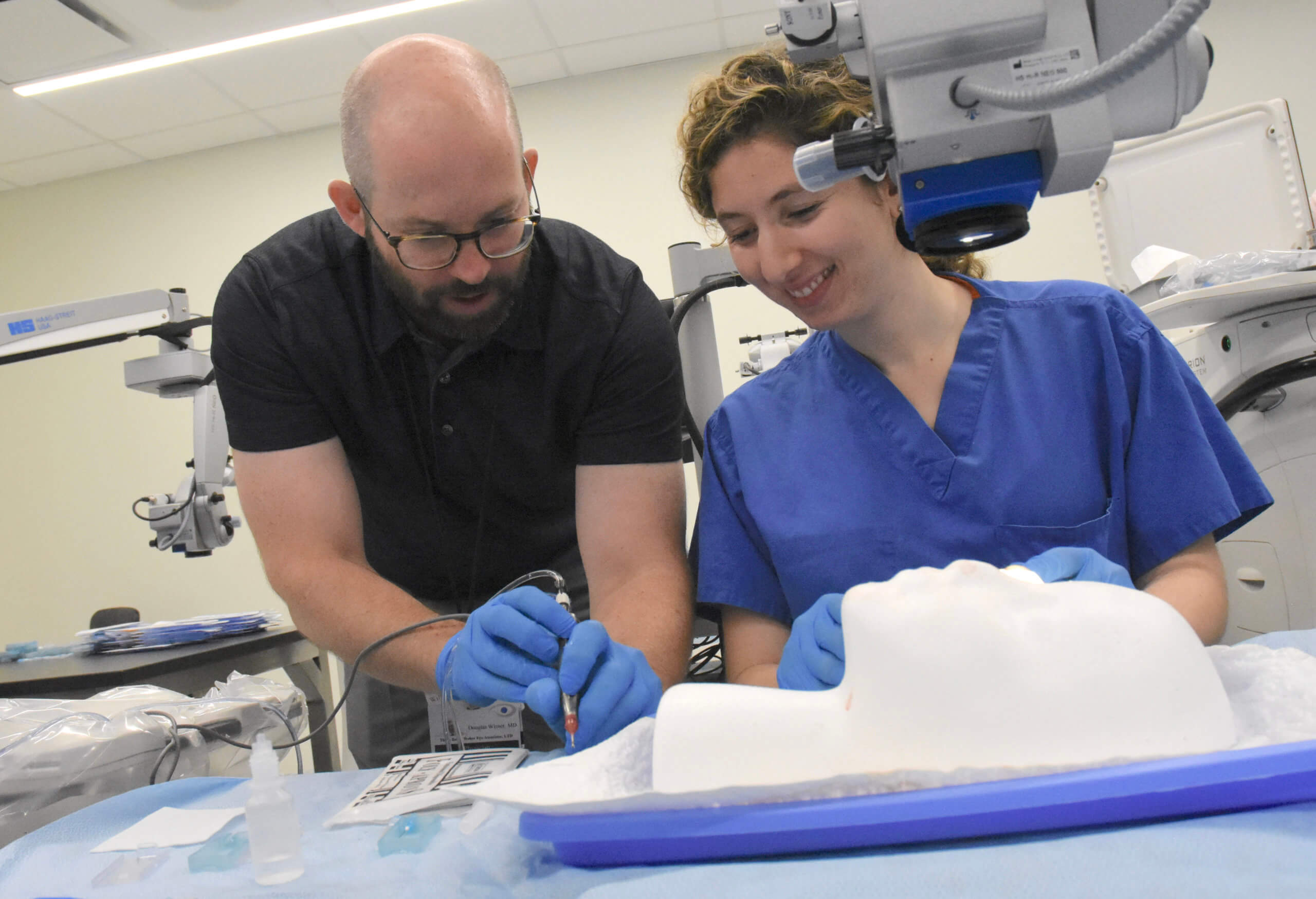


Wills Eye is firmly committed to our educational mission of providing residents, fellows, and the community of eye health professionals with a range and variety of educational opportunities that include not only the basics of ophthalmic medicine but also maximum access to the most sophisticated tools and technologies in the field.
Indeed, ophthalmologists trained at Wills Eye Hospital are the inheritors of a great tradition in medical education that stems from the creation of the nation’s first ophthalmology residency program at Wills in 1839. For generations, Wills physicians have pioneered new treatments, surgical techniques, and training methods that have defined the field of ophthalmology and propelled Wills as a global leader in ophthalmic medicine and education.
WILLIAM MAUL MEASEY OPHTHALMIC SURGICAL TRAINING (MOST) LABORATORY
The William Maul Measey Ophthalmic Surgical Training (MOST) Laboratory advances ophthalmic microsurgical training with access to the latest technology and techniques that are needed to efficiently and safely learn ophthalmic surgery in an increasingly complex environment.
The lab is composed of nine workstations, including state-of-the art Haag-Streit Hi-R Neo microscopes mounted to custom-designed ergonomic tables. These stations form an integrated A/V system with the ability to receive or send external digital signals, as well as a large format touch screen monitor for collaborative teaching. In order to give equal exposure to multiple platforms, the lab maintains phacoemulsification units from Alcon, B&L (with vitrectomy capabilities) and J&J. We have 16 sets of OR grade microsurgical instrumentation including MST sets. Work at the stations can either be done on porcine tissue or synthetic tissue. The lab also features two VRMagic EyeSi simulator systems that are networked to other training programs throughout the world, allowing users to track their progress along a defined pre-surgical curriculum. These simulators also feature complications management software.


WILLS EYE SURGICAL LIBRARY
The Wills Eye Library offers an extensive collection of surgical videos, operative reports, lectures, and wet labs created for ophthalmologists looking to expand their surgical skills. We welcome you to explore the collection and share with your colleagues. To visit the library, click here.
CONTACT US
The combination of facilities and expertise makes the MOST lab one of the best ophthalmic training facilities in the country, and continues to add to the tradition of excellence at Wills Eye. For questions regarding use of the lab, please contact:
Marie Fiorillo (mfiorillo@willseye.org), MOST Lab manager
Douglas M. Wisner MD, Director, MOST Lab at Wills Eye Hospital
A Legacy of Outstanding Eye Care and Medical Training
As a specialty institution from its inception in 1834, Wills Eye developed momentum early on as a pioneer in the prevention and treatment of eye diseases that has made Wills a global leader. Our history is intertwined with the development of modern ophthalmology:
- Development of the first topical ocular anticholinesterase preparation for glaucoma therapy (Irving Leopold, M.D., 1950s).
- Implantation of the first intraocular lens in the U.S. (Warren Reese, M.D. and Turgut Hamdi, M.D., 1952)
- Establishment of the Wills Eye Glaucoma Service in 1970 by George Spaeth, M.D., who has shaped the world’s understanding of this complex disease and developed a grading system, now utilized worldwide, for the normal vs. glaucomatous optic nerve.
- Early studies that revolutionized the treatment of ROP (Retinopathy of Prematurity) that dramatically reduced the rate of blindness in premature infants (William Tasman, M.D. and J. Arch McNamara, M.D., 1970s-80s)
- Pioneering development of first suction infusion tissue extractor (SITE) vitrectomy machines (Jay Federman, M.D., 1972)
- Establishment of the first full-time Ocular Oncology Service in the U.S. (Jerry Shields, M.D., 1974)
- First surgical implantation in Philadelphia of the Argus® II retinal prosthesis for end-stage retinitis pigmentosa (Allen Ho, M.D. and Carl Regillo, M.D., 2009)
- Conception and authorship (through 8 editions) of the Wills Eye Manual, the world’s #1 best-selling book on ophthalmology, written by residents.
